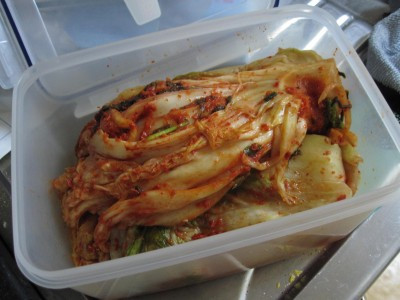A northern Illinois native, I've been teaching at a private English academy in Seoul, South Korea for over a year. Although elementary/middle school children don't attend until after their morning of public school, the preschool and kindergarten students attend full time and receive lunch at the academy. For almost my entire first year, I ate alongside the other teachers and students and learned much about typical Korean cuisine and nutrition. Since discovering Mrs. Q.'s blog last Fall, it's been fascinating to compare food and educational experiences across cultures.
作為一個北伊諾斯州人,我在韓國首爾的初級英語學院教學已經(jīng)有一年了。盡管中小學生在公立學校中上完早上的才來參加,但是來自學前班和幼兒園的學生全天都在學院里并且午飯也再學院里吃。在我的第一年中的大多數(shù)時間,我都和別的老師和學生一起吃飯并且學到了很多關于典型韓國人的烹飪方法和營養(yǎng)學。自從去年秋天發(fā)現(xiàn)了Q女士的博客,我就陶醉于比較兩種不同文化之間的實物和教育經(jīng)驗
My academy has hired lunch through two different caterers and it always consists of rice and at least one type of kimchi or stewed radish, among various side dishes. Kimchi is the traditional dish of Korea, and can take on a variety of appearances and flavors. The main ingredients are cabbage, which is fermented in large pots, and spicy pepper seasoning.
我的學院中的午飯是由兩個不同的承包人來準備的,在各種各樣的菜中總是有米飯和至少一種泡菜或著燉蘿卜。泡菜是韓國傳統(tǒng)的食物,它可以搭配各種佐料,也可以各種不同的形式呈現(xiàn)。泡菜的主要原料是卷心菜,人們把卷心菜放在壇子里,然后用辣椒給它調(diào)味

Homemade kimchi, gifted to me by a student. I didn't eat all of it, but I did enjoy servings on occasion until my ultra-cold refrigerator frosted it over!
自制的泡菜,這是一個學生給我的禮物。我沒有把所有的都吃完,但我真的喜歡偶爾吃吃,直到我的超低溫冰箱給它蒙上了一層霜。













